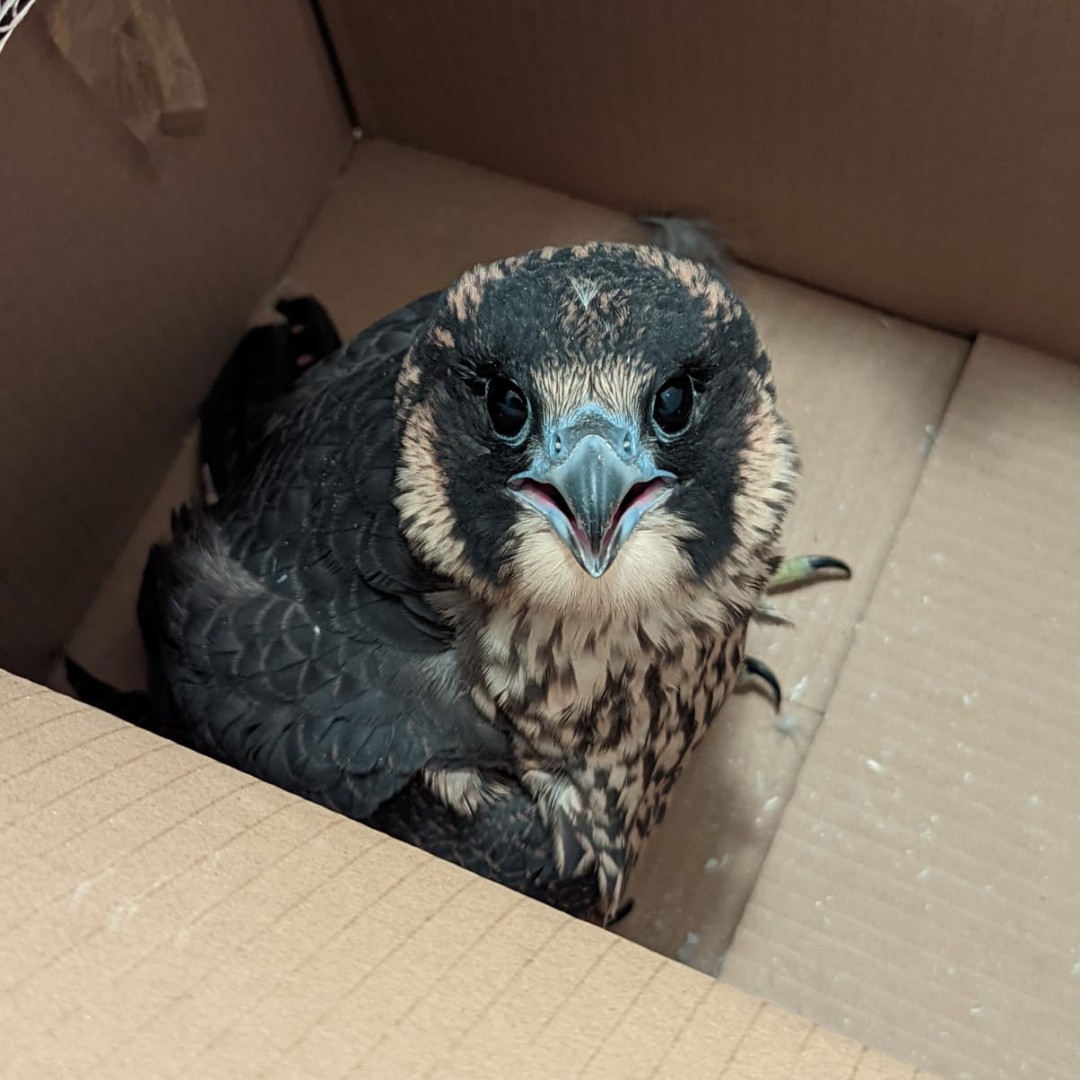
We are extremely proud of the work we do in the National Bird of Prey Hospital™. Hospital Manager Cedric Robert, along with other dedicated staff members and volunteers, work tirelessly to ensure all the birds get the highest level of care possible, and the best chance at survival when they are released back into the wild.
So far, 2022 has been no exception, and Cedric and the team are very busy as always. May and June are particularly busy months as it is the height of the breeding season for Tawny Owls, when many chicks are hatching. Tawny Owl chicks are often brought into our hospital because they venture out of the nest when they are still very young, and may appear like they are not quite ready! This behaviour is called ‘branching’ and is a completely natural behaviour for this species, and the parents will still feed the chick. If you find a Tawny Owl chick out of the nest, it will usually be perfectly OK. However, if you are worried for any reason, or the owl looks like it might be injured or in danger, for example if it is on a busy footpath or bridleway, near a road, or where cats or dogs might be able to find it, then you can always give us a call for advice. Find out what to do if you find an injured, sick or orphaned bird of prey.
At of the time of writing (29 June 2022) we currently have 14 Tawny Owl chicks in our care. We are happy to report that they are all doing well, and many are nearly ready for release back into the wild! Two of these Tawny Owl chicks were only recently moved from the inside aviaries to the outdoor rehabilitation aviaries, where they can gain fitness and hone their flying skills before they are released. We caught up with Cedric, who gave us an insight into how this exciting step in the owl’s recovery goes ahead:
We have also admitted six Little Owl chicks in the past month. So far, Cedric has cared for a clutch of four Little Owl chicks together, and two individual chicks bought in separately. This is an increase on last year for Little Owl admissions. It is not unusual for admissions to vary between years and probably just a coincidence and stroke of luck that the people who admitted these chicks were in the right place at the right time!
The two individual chicks were both found separately, on the ground with no sign of their parents. After some time being monitored for any health conditions, Cedric made the decision to bring the two chicks together. As they are still very young, this helps to imitate the natural nest environment, where chicks would have clutch mates to share the nest with. Here Cedric is checking their condition and weight and they are making great progress. In a few weeks they will be ready to move into one of our outside aviaries to practice flying before they are released back into the wild.
It is not just owls that Cedric and the team have been caring for so far! This year so far we’ve seen seven different species come through our hospital doors. We have also had a few fleeting visits from Peregrine Falcons from around the local area, including this handsome juvenile. Brought in to us disorientated, it was checked over by our vet and found to be in good health. After a rest, it was alert and ready to be returned to its family within 24 hours. This is a fantastic result, as unlike some birds of prey, Peregrine Falcons need that time with their parents when fledging to learn from them how to hunt effectively.

However busy it gets in the hospital, the work feels wonderfully worthwhile. The National Bird of Prey Hospital™ can treat up to 200 sick, injured or orphaned wild birds of prey a year. You can find out more about the fantastic work that goes on in the hospital here.